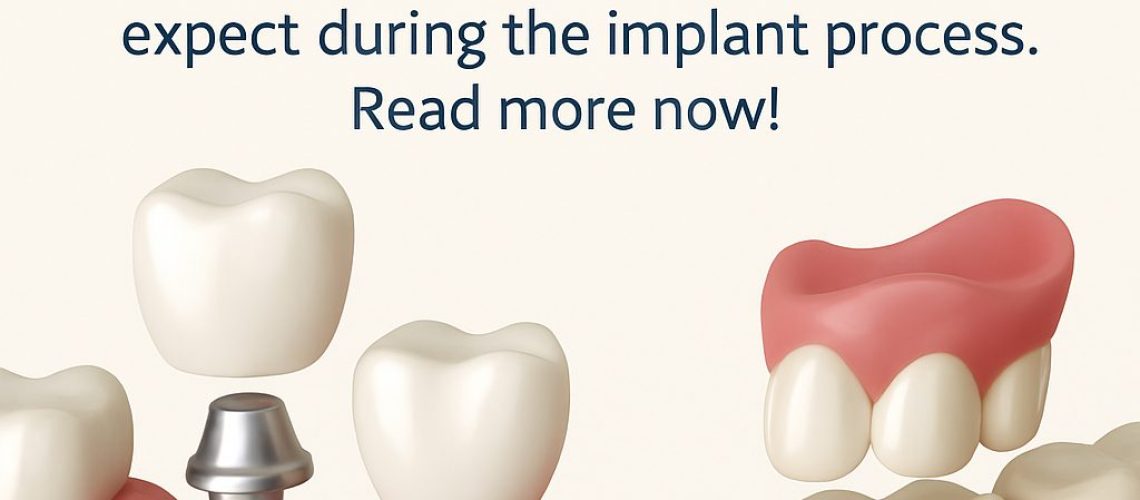Losing a tooth is common, and many people type how to fix a missing tooth into search when they want answers fast. This post compares the main options and explains why dental implants are a great, long‑lasting solution. Your best choice depends on your health, budget, and long‑term goals — this guide will help you weigh those factors and take practical next steps.
Why you shouldn’t ignore a missing tooth
A missing tooth is more than a cosmetic problem. In the short term you may notice harder chewing or a change in speech. Over time, the gap can cause nearby teeth to shift, change your bite, and speed jawbone loss. That can make future treatment harder, more expensive, or require bone grafting. Early evaluation keeps options simpler and results more predictable.
Common ways to fix a missing tooth
Dental implants
A single‑tooth implant replaces both the root and the tooth. A titanium implant is placed in the jaw, an abutment connects the implant to the crown, and a custom crown restores chewing and appearance. Because the implant acts like a real root, it helps preserve the jawbone and nearby teeth. Many people searching how to fix a missing tooth in Dallas–Fort Worth find implants are the most natural, long‑lasting option.
Fixed dental bridges
Bridges span the gap using crowns on the teeth beside it. They’re quicker and don’t require surgery, but they need healthy adjacent teeth to be reshaped. Bridges don’t stop bone loss under the missing tooth and may need replacement every 10–15 years depending on wear and decay.
Removable partial dentures
Partials clip onto nearby teeth to fill the space. They are often the most affordable and avoid surgery, but they can feel bulky, move while eating or speaking, and need daily removal and cleaning. Partials are a good short‑term choice or for patients who can’t have implants right away.
Why dental implants are a great, long‑lasting solution
Implants look and feel like natural teeth, offer strong long‑term durability, and protect the jawbone by stimulating it like a natural root. Success rates are high when placed by experienced surgeons and with good oral hygiene. For many people asking how to fix a missing tooth, implants provide the best long‑term value — especially when health and budget allow.
What to expect during the implant process
Consultation and planning
Your surgeon will review medical history, examine your mouth, and use 3D imaging (CBCT) or intraoral scans to plan implant placement. Expect a clear discussion of timelines, costs, and any preparatory work like extractions or bone grafting.
Surgery and healing
Implant placement is usually an outpatient procedure with local anesthesia, often with sedation options. Healing takes weeks to months while the implant bonds with bone (osseointegration). Most patients manage swelling and discomfort with simple pain control and short‑term diet changes.
Restoration and follow‑up
Once healed, a custom abutment and crown are attached. Follow‑up visits check fit and oral health. Long‑term success depends on regular dental visits and daily brushing and flossing around the implant.
Who is a good candidate for dental implants?
Good candidates are in generally good health, have adequate jawbone, and can maintain oral hygiene. Chronic conditions like diabetes should be controlled. Smokers and patients with significant bone loss can still get implants, but they may need extra steps such as smoking cessation or bone grafting. Your surgeon will discuss staged care or alternative options if implants aren’t immediately suitable.
Cost, insurance, and financing
Price varies by number of implants, need for extractions or grafting, implant materials, and lab work. Insurance sometimes covers part of the crown but often not the surgical implant portion. Many practices offer payment plans, third‑party financing, or in‑house options to spread costs. Get a written estimate that breaks out each component so you can compare offers.
How to choose the right provider for implants
- Choose board‑certified oral surgeons or specialists with many implant cases.
- Look for digital planning, 3D imaging, and evidence of predictable outcomes.
- Ask about sedation options, in‑house lab work, and before/after photos or reviews.
- Get a clear treatment timeline and a written estimate.
About Texas Center for Oral Surgery & Dental Implants
Texas Center for Oral Surgery & Dental Implants serves the Dallas–Fort Worth Metroplex with board‑certified oral and maxillofacial surgeons and a fully digital, in‑house lab. The Center uses advanced tools like dynamic surgical guidance, CBCT imaging, on‑site milling and 3D printing, and IV sedation to support precise, predictable implant care. These capabilities help streamline single‑tooth implants and full‑arch restorations with fast turnaround and focused surgical expertise.
Next steps: getting evaluated and moving forward
If you’ve been wondering how to fix a missing tooth, schedule a consultation. Bring your medical and dental history, ask about imaging and treatment timelines, and request a clear cost estimate with financing options. Book a visit to get personalized advice and a plan that fits your health and budget — the sooner you evaluate the gap, the simpler and more predictable your treatment will be.

